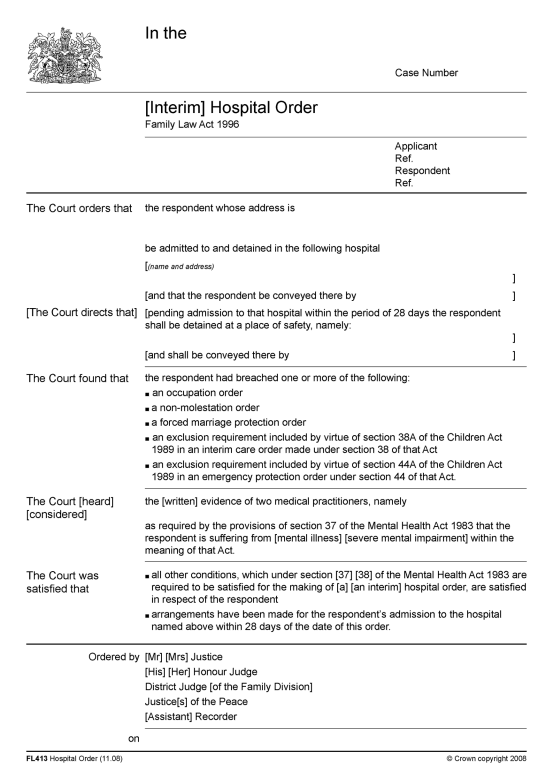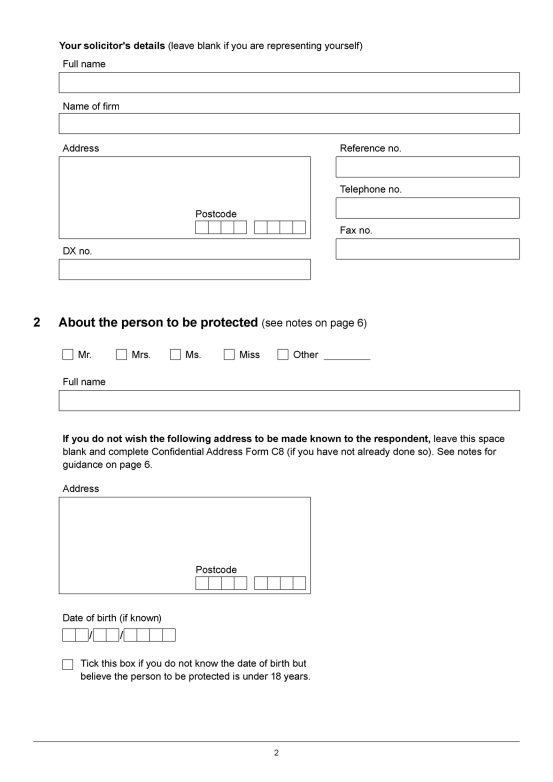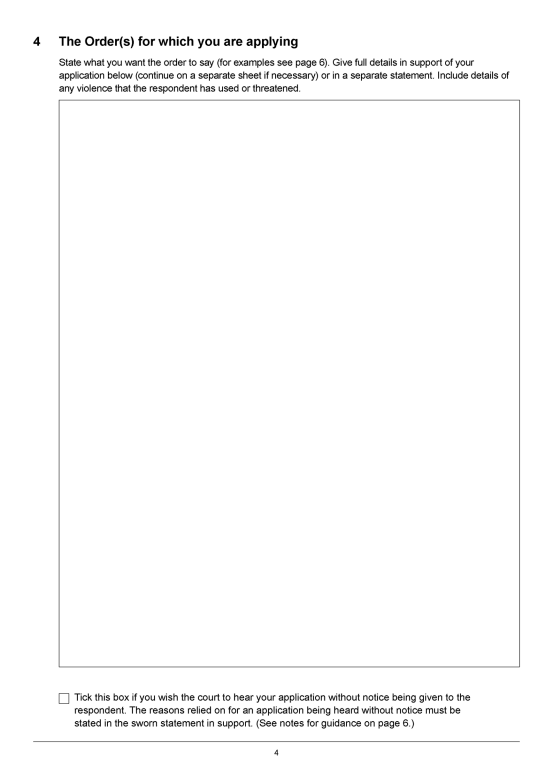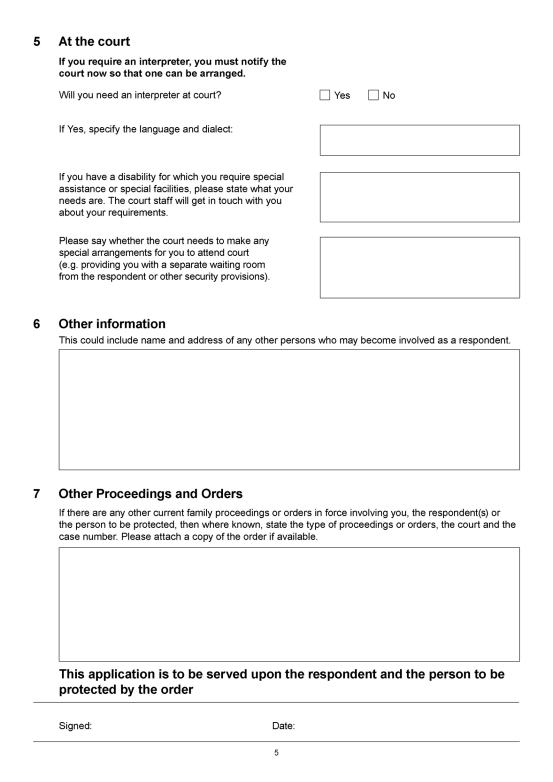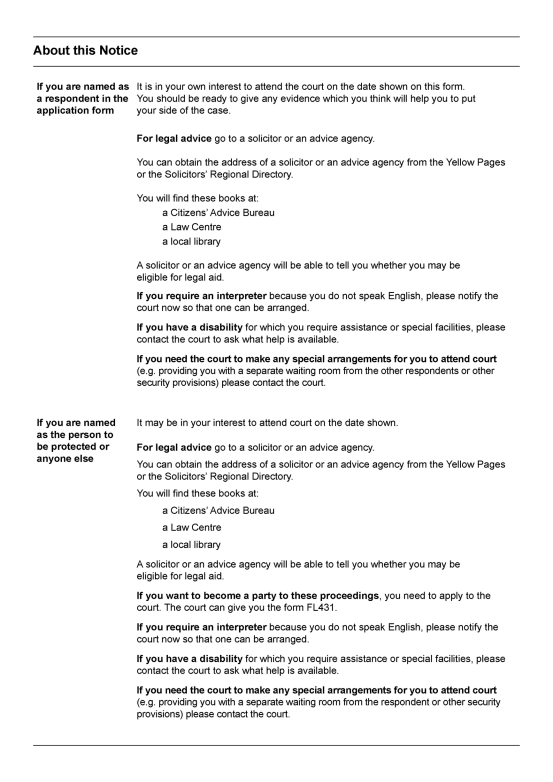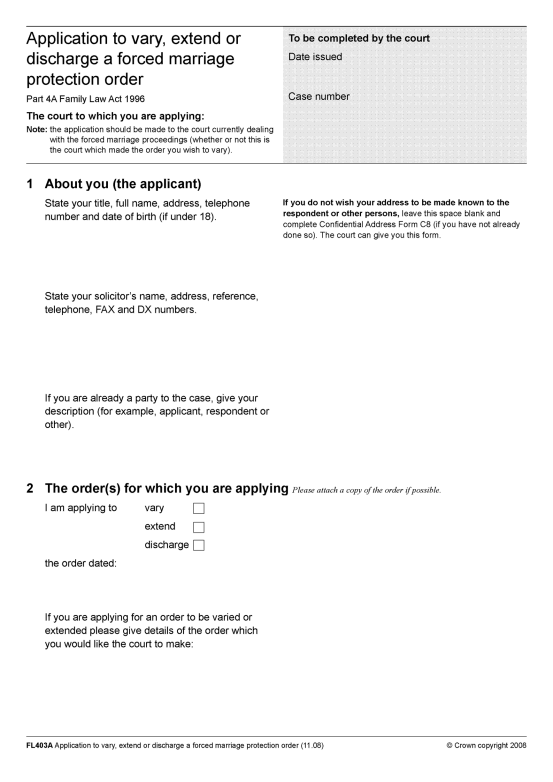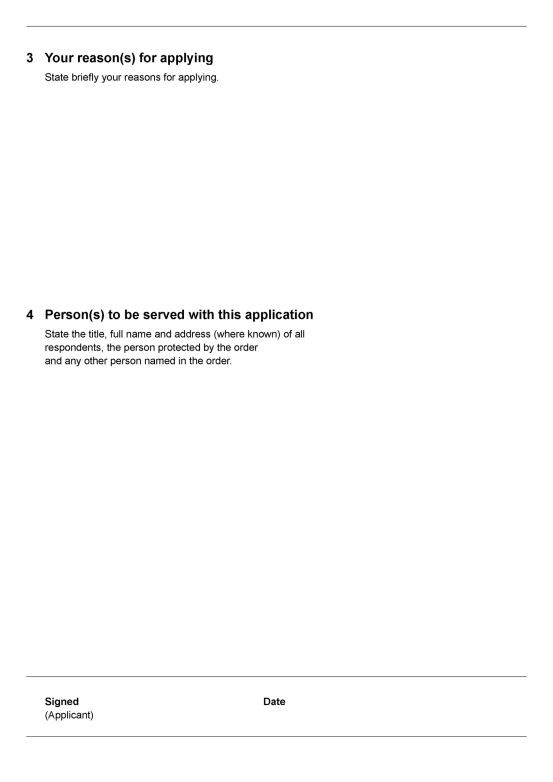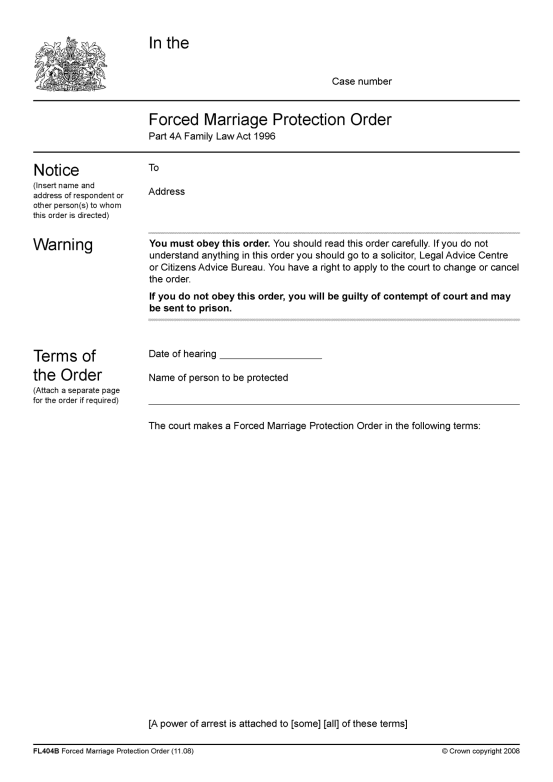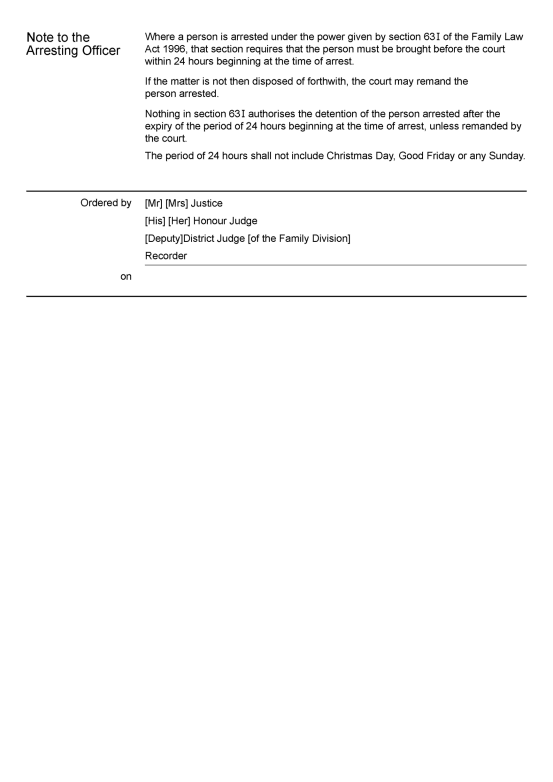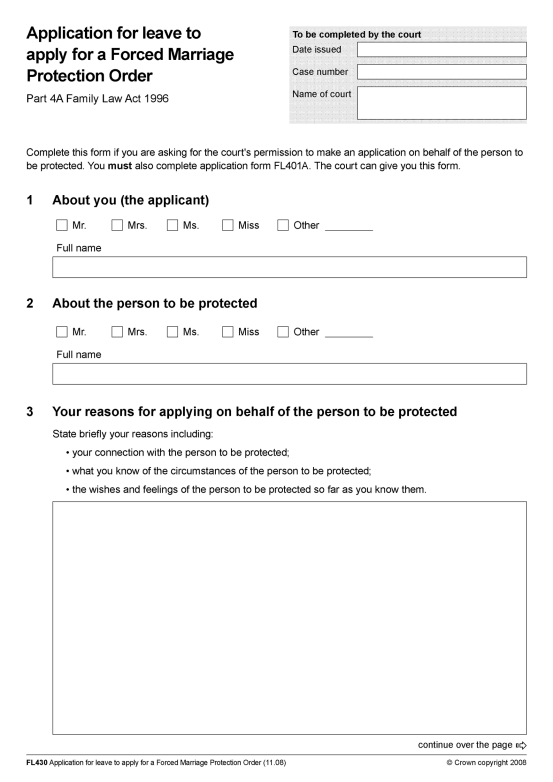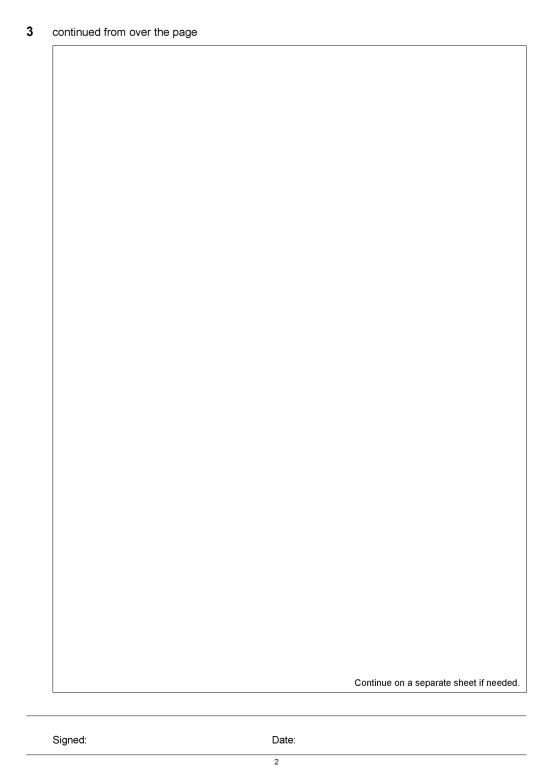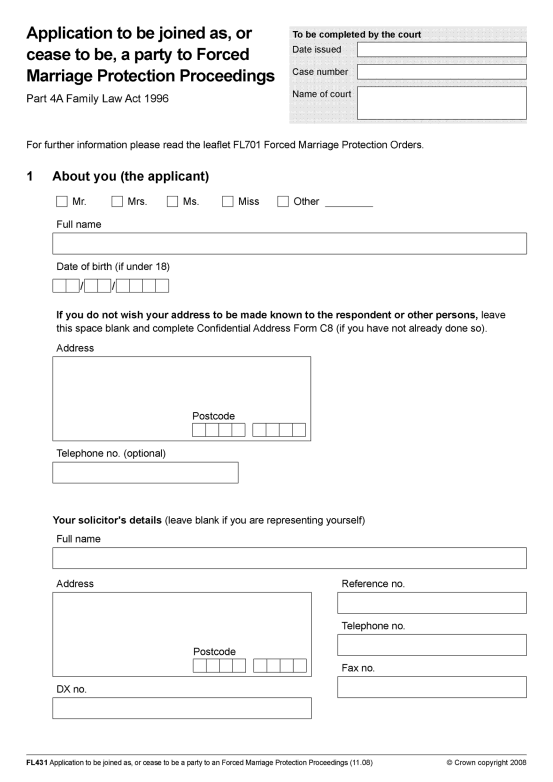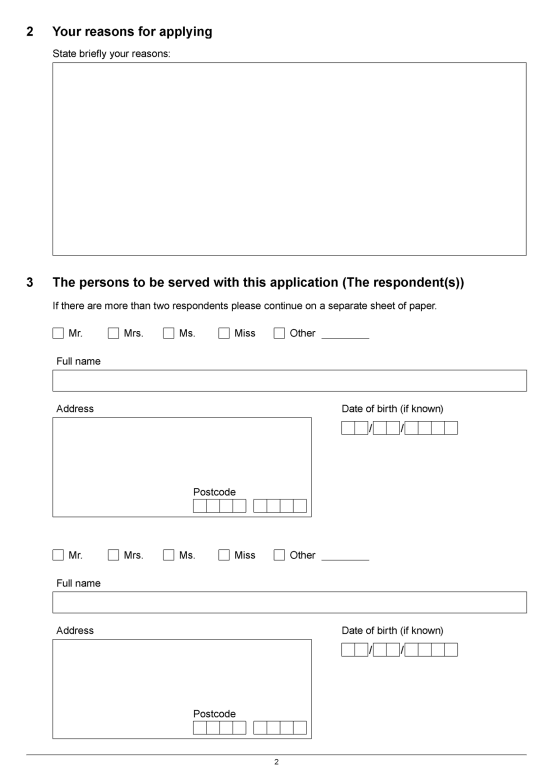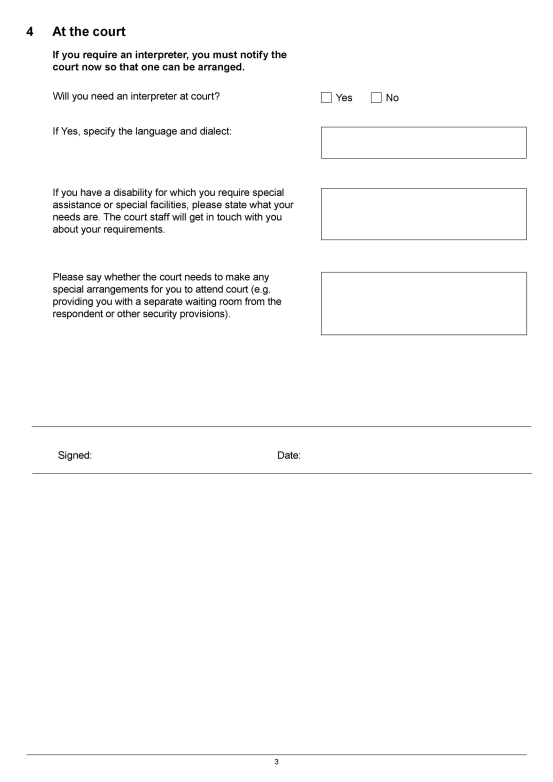- Latest available (Revised)
- Original (As made)
The Family Proceedings (Amendment) Rules 2008
You are here:
- UK Statutory Instruments
- 2008 No. 2446 (L. 11)
- Whole Instrument
- Previous
- Next
More Resources
Status:
This is the original version (as it was originally made). This item of legislation is currently only available in its original format.
Statutory Instruments
2008 No. 2446 (L. 11)
Family Proceedings
Supreme Court Of England And Wales
County Courts, England And Wales
The Family Proceedings (Amendment) Rules 2008
Made
16th September 2008
Laid before Parliament
18th September 2008
Coming into force as provided in rule 1(2)
The Family Proceedings Rule Committee makes the following Rules in exercise of the powers conferred by section 40(1) and (4)(aa) of the Matrimonial and Family Proceedings Act 1984(1):
Citation and commencement
1.—(1) These Rules may be cited as the Family Proceedings (Amendment) Rules 2008.
(2) These rules shall come into force as follows—
(a)this rule and rules 2, 3(a), 5, 6, 10 and 12 shall come into force on 3rd November 2008; and
(b)the remaining rules shall come into force on 25th November 2008.
Amendments to the Family Proceedings Rules 1991
2. The Family Proceedings Rules 1991(2) shall be amended in accordance with the provisions of rules 3 to 13.
3. In the Arrangement of Rules—
(a)in the entry for rule 3.23, for “Child Support Commissioner”, substitute “Upper Tribunal”;
(b)after the entry for rule 3.24, insert—
“3.25 Proceedings under Part 4A of the Family Law Act 1996: interpretation of rules and forms
3.26 Applications under Part 4A of the Family Law Act 1996 for forced marriage protection orders
3.27 Leave stage for forced marriage protection orders
3.28 Service of the application for a forced marriage protection order
3.29 Transfer of proceedings
3.30 Parties to proceedings for a forced marriage protection order
3.31 Orders for disclosure against a person not a party
3.32 Claim to withhold inspection or disclosure of a document
3.33 Hearing of applications for forced marriage protection orders
3.34 Forced marriage protection orders made by the court of its own motion
3.35 Enforcement of forced marriage protection orders
3.36 Applications under Part 4A of the Family Law Act 1996: bail”; and
(c)after the entry for rule 8.1A, insert—
“8.1B Appeals from orders made under Part 4A of the Family Law Act 1996”.
4. In rule 3.8, for paragraph (9) substitute—
“(9) Subject to any enactment, where an application for an occupation order or a non-molestation order is pending, the court may transfer the proceedings to another court of its own motion or on the application of either party; and any order for transfer shall be made in Form FL417.”.
5. In rule 3.22(1) for “appeal tribunals” substitute “First-tier Tribunal”.
6. In rule 3.23 —
(a)in the heading for “Child Support Commissioner” substitute “Upper Tribunal”;
(b)in paragraph (1) for the words “25 of the Act of 1991” to the end, substitute “13 of the Tribunals, Courts and Enforcement Act 2007(3) (right to appeal to Court of Appeal etc)”;
(c)in paragraph (2) for “Commissioner” substitute “ Upper Tribunal”; and
(d)in paragraph (3) for “Commissioner’s” substitute “Upper Tribunal’s”.
7. After rule 3.24, insert—
“Proceedings under Part 4A of the Family Law Act 1996: interpretation of rules and forms
3.25.—(1) In rules 3.26 to 3.36—
“a forced marriage protection order” means an order under section 63A of the Family Law Act 1996(4);
“the person who is the subject of the proceedings” means the person who will be protected by the forced marriage protection order applied for or being considered by the court of its own motion, if that order is made, or who is being protected by such an order.
(2) In connection with proceedings under Part 4A of the Family Law Act 1996, references in the forms mentioned below to “respondent” are to be read—
(a)in Forms FL408, FL413 and FL414, as references to the respondent or other person who has failed to comply with the forced marriage protection order or is otherwise in contempt of court in relation to the order;
(b)in Forms FL409, FL410, FL411 and FL412, as references to the respondent or other person arrested under section 63I or 63J of the Family Law Act 1996(5).
Applications under Part 4A of the Family Law Act 1996 for forced marriage protection orders
3.26.—(1) An application for a forced marriage protection order, including an application for a forced marriage protection order which is made in other proceedings which are pending, shall be made in Form FL401A.
(2) An application for a forced marriage protection order made by an organisation shall state—
(a)the name and address of the person submitting the application; and
(b)the position which that person holds in the organisation.
(3) Where an application is made without notice, it shall be supported by a sworn statement explaining why notice has not been given.
Leave stage for forced marriage protection orders
3.27.—(1) Where the leave of the court is required to apply for a forced marriage protection order, the person seeking leave shall file—
(a)a written request for leave in Form FL430 setting out—
(i)the reasons for the application;
(ii)the applicant’s connection with the person to be protected;
(iii)the applicant’s knowledge of the circumstances of the person to be protected; and
(iv)the applicant’s knowledge of the wishes and feelings of the person to be protected;
and
(b)a draft of the application for the making of which leave is sought, together with sufficient copies for one to be served on each respondent and the person to be protected.
(2) As soon as practicable after receiving a request under paragraph (1), the court shall—
(a)grant the request, or
(b)direct that a date be fixed for the hearing of the request and fix the date,
and the proper officer shall inform the following persons of the court’s action under this paragraph—
(i)the person making the request,
(ii)the respondent,
(iii)(if different) the person to be protected, and
(iv)any other person directed by the court.
(3) Where leave is granted to bring proceedings, the application shall proceed in accordance with rule 3.26.
Service of the application for a forced marriage protection order
3.28.—(1) Subject to paragraph (3), in every application made on notice the applicant shall serve a copy of the application, together with the notice of proceedings in Form FL402A, on—
(a)the respondent,
(b)the person who is the subject of the proceedings (if not the applicant), and
(c)any other person directed by the court,
personally not less than 2 days before the date on which the application will be heard.
(2) The court may abridge the period specified in paragraph (1).
(3) Service of the application shall be effected by the court if the applicant so requests.
This does not affect the court’s power to order substituted service.
(4) The applicant shall file a statement in Form FL415 after the application has been served.
Transfer of proceedings
3.29.—(1) Subject to any enactment, where proceedings under Part 4A of the Family Law Act 1996 are pending, the court may transfer the proceedings to another court of its own motion or on the application of a party or (if not a party) the person who is the subject of the proceedings.
(2) The order for transfer shall be in Form FL417.
Parties to proceedings for a forced marriage protection order
3.30.—(1) In proceedings under Part 4A of the Family Law Act 1996, a person may file a request in Form FL431 for that person or another person to—
(a)be joined as a party, or
(b)cease to be a party.
(2) As soon as practicable after receiving a request under paragraph (1), the court shall do one of the following—
(a)in the case only of a request under paragraph (1)(a), grant the request;
(b)order that the request be considered at a hearing, and fix a date for the hearing; or
(c)invite written representations as to whether the request should be granted, to be filed within a specified period, and upon expiry of that period act under sub-paragraph (a) or (b) as it sees fit;
and the proper officer shall inform the following persons of the court’s action under this paragraph—
(i)the person making the request,
(ii)the applicant and the respondent,
(iii)(if different) the person who is the subject of the proceedings, and
(iv)any other person directed by the court.
(3) The court may direct—
(a)that a person who would not otherwise be a respondent under these rules be joined as a party to the proceedings; or
(b)that a party to the proceedings cease to be a party;
and such a direction may be made by the court of its own motion as well as upon a request under paragraph (1).
Orders for disclosure against a person not a party
3.31.—(1) This rule applies where an application is made to the court under any Act for disclosure by a person who is not a party to the proceedings.
(2) The application must be supported by evidence.
(3) The court may make an order under this rule only where—
(a)the documents of which disclosure is sought are likely to support the case of the applicant or adversely affect the case of one of the other parties to the proceedings; and
(b)disclosure is necessary in order to dispose fairly of the proceedings or to save costs.
(4) An order under this rule shall—
(a)specify the documents or the classes of documents which the non-party must disclose; and
(b)require the non-party, when making disclosure, to specify any of those documents—
(i)which are no longer in his control; or
(ii)in respect of which he claims a right or duty to withhold inspection.
(5) Such an order may—
(a)require the non-party to indicate what has happened to any documents which are no longer in his control; and
(b)specify the time and place for disclosure and inspection.
Claim to withhold inspection or disclosure of a document
3.32.—(1) A person may apply, without notice, for an order permitting him to withhold disclosure of a document on the ground that disclosure would damage the public interest.
(2) Unless the court orders otherwise, an order of the court under paragraph (1)—
(a)must not be served on any other person; and
(b)must not be open to inspection by any person.
(3) A person who wishes to claim that he has a right or duty to withhold inspection of a document, or part of a document, must state in writing—
(a)that he has such a right or duty; and
(b)the grounds on which he claims that right or duty.
(4) The statement referred to in paragraph (3) must be made to the person wishing to inspect the document.
(5) A party or (if different) the person who is the subject of the proceedings may apply to the court to decide whether a claim made under paragraph (3) should be upheld.
(6) For the purpose of deciding an application under paragraph (1) (application to withhold disclosure) or paragraph (3) (claim to withhold inspection), the court may—
(a)require the person seeking to withhold disclosure or inspection of a document to produce that document to the court; and
(b)invite any person, whether or not a party, to make representations.
(7) An application under paragraph (1) or paragraph (3) shall be supported by evidence.
(8) This rule does not affect any rule of law which permits or requires a document to be withheld from disclosure or inspection on the ground that its disclosure or inspection would damage the public interest.
Hearing of applications for forced marriage protection orders
3.33.—(1) The hearing of an application for a forced marriage protection order shall be in chambers unless the court otherwise directs.
(2) A record of the hearing shall be made in Form FL405.
(3) The order made on the hearing shall be issued in Form FL404B.
(4) The court may direct the withholding of any submissions made, or any evidence adduced, for or at the hearing—
(a)in order to protect the person who is the subject of the proceedings or any other person, or
(b)for any other good reason.
(5) The applicant shall serve—
(a)a copy of the order;
(b)a copy of the record of the hearing; and
(c)where the order is made without notice, a copy of the application together with any statement supporting it;
on the respondent, the person being protected by the order (if neither the applicant nor a respondent) and any other person named in the order, personally as soon as reasonably practical.
(6) Service of the documents mentioned in paragraph (5) shall be effected by the court if the applicant so requests or where the court made the order of its own motion.
(7) The court may direct that a further hearing be held to consider any representations made by the respondent, the person being protected by the order (if neither the applicant nor a respondent) and any other person named in the order.
(8) An application to vary, extend or discharge a forced marriage protection order shall be made in Form FL403A and this rule shall apply to the hearing of such an application.
Forced marriage protection orders made by the court of its own motion
3.34.—(1) Where the court makes a forced marriage protection order of its own motion under section 63C of the Family Law Act 1996(6), it shall set out in the order—
(a)a summary of its reasons for making the order; and
(b)the names of the persons who are to be served with the order.
(2) The court may order service of the order on—
(a)any of the parties to the current proceedings;
(b)(if different) the person being protected by the order; and
(c)any other persons whom the court considers should be served.
(3) The court will give directions as to how the order is to be served.
(4) The court may direct that a further hearing be held to consider any representations made by any of the persons named in the order.
(5) Rule 3.33(8) applies to an order made under this rule as it applies to an order made under rule 3.33.
Enforcement of forced marriage protection orders
3.35.—(1) Subject to the following modifications, rule 3.9A shall apply to a forced marriage protection order as it applies to an order made under Part IV of the Family Law Act 1996.
(2) In paragraph (1)—
(a)for “an occupation order”, substitute “a forced marriage protection order”; and
(b)for “FL406”, substitute “FL406A”.
(3) For paragraph (1A), substitute—
“(1A) Where paragraph (1) applies, the following documents shall be delivered to the officer for the time being in charge of any police station for the address of the person being protected by the order or of such other police station as the court may specify—
(a)Form FL406A, and
(b)a statement showing that the respondents and any other persons directed by the court to be served with the order have been so served or informed of its terms (whether by being present when the order was made or by telephone or otherwise).”
(4) In paragraph (1B)—
(a)delete the words “on the respondent” in both places where they occur;
(b)in sub-paragraph (a), for “3.9(2) or (4)”, substitute “3.33(5)”; and
(c)in sub-paragraph (b), for “3.9(5)”, substitute “3.33(6) or 3.34(3)”.
(5) In paragraph (2)—
(a)for “an occupation order or, as the case may be, any provisions of a non-molestation order”, substitute “a forced marriage protection order”; and
(b)for “the applicant’s address”, substitute “the address of the person being protected by the order”.
(6) For paragraph (3), substitute—
“(3) An application for the issue of a warrant for the arrest of a person under section 63J(2) of the Family Law Act 1996 shall be—
(a)made in Form FL407A; and
(b)accompanied by a sworn statement.
(3A) An application for the issue of a warrant of arrest made by a person who is neither the person being protected by the order nor (if different) the person who applied for the order shall be treated, in the first instance, as an application for leave and the court shall either—
(a)grant the application; or
(b)direct that a date be fixed for the hearing of the application and fix a date,
and shall in either case inform the following persons of the court’s action—
(i)the person applying for the issue of the warrant;
(ii)the person being protected by the order;
(iii)any other person directed by the court.
(3B) The warrant shall be issued in Form FL408.”
(7) In paragraph (5)—
(a)for “IV”, substitute “4A”; and
(b)for the words from “and CCR Order 29” to the end, substitute “and CCR Order 29, rule 1 shall have effect, as if for paragraph (3) there was substituted the following—
“(3) At the time when the order is drawn up, the proper officer shall, where the order made is (or includes) a forced marriage protection order, issue a copy of the order, indorsed with or incorporating a notice as to the consequences of disobedience, for service in accordance with paragraph (2).”
(8) In paragraph (6), for “respondent”, substitute “arrested person”.
(9) In paragraph (7)(b)—
(a)after “applicant”, insert “and (if different) the person being protected by the order”; and
(b)for “respondent”, substitute “person who has failed to comply with the order or is otherwise in contempt of court in relation to the order”.
(10) In paragraph (9), for “respondent”, substitute “arrested person”.
(11) In paragraph (10)—
(a)for “an occupation order”, substitute “a forced marriage protection order”;
(b)for “47(2) or (3)”, substitute “63H(2) or (4)”; and
(c)for “47(8)”, substitute “63J(2)”.
Applications under Part 4A of the Family Law Act 1996: bail
3.36.—(1) Subject to the following modifications, rule 3.10 shall apply to a forced marriage protection order as it applies to an order made under Part IV of the Family Law Act 1996.
(2) In paragraph (1)—
(a)for “an occupation order”, substitute “a forced marriage protection order”;
(b)for “47(2) or (3)”, substitute “63H(2) or (4)”;
(c)for “47(8)”, substitute “63J(2)”.
(3) In paragraph (3), for “the applicant for the Part IV order”, substitute—
“—
(a)the applicant for the forced marriage protection order;
(b)the (or any other) respondent to the application for the order;
(c)(if different) the person being protected by the order; and
(d)any other person named in the order.”
(4) In paragraph (4), omit sub-paragraphs (b) and (c).”.
8. After rule 8.1A, insert—
“Appeals from orders made under Part 4A of the Family Law Act 1996
8.1B.—(1) This rule applies to all appeals from orders made under Part 4A of the Family Law Act 1996 and on such an appeal—
(a)paragraphs (2), (3), (4) and (5) of rule 4.22;
(b)paragraphs (5) and (6) of rule 8.1; and
(c)paragraphs (4)(e) and (6) of rule 8.2;
shall apply to the following provisions of this rule and with the necessary modifications.
(2) A district judge may dismiss an appeal to which this rule applies for want of prosecution and may deal with any question of costs arising out of the dismissal or withdrawal of an appeal.
(3) Any order or decision granting or varying an order (or refusing to do so) in proceedings under Part 4A of the Family Law Act 1996 shall be treated as a final order for the purposes of CCR Order 37, rule 6 and, on an appeal from such an order, the judge may exercise his own discretion in substitution for that of the district judge and the provisions of CCR Order 37, rule 6 shall apply.”.
9. In rule 9.1(3), after “the Act of 1989”, insert “, Part 4A of the Family Law Act 1996”.
10. In rule 10.20A(3), in the fourth entry in the second column, for “an appeal tribunal” substitute “the First-tier Tribunal”.
11. In rule 10.21—
(a)after paragraph (1), insert—
“(1A) In proceedings under Part 4A of the Family Law Act 1996, a party is also not required to reveal the address of—
(a)the person who is the subject of the proceedings; or
(b)any witness;
unless the court directs otherwise.”; and
(b)in paragraph (2), for “paragraph (1) above”, substitute “this rule”.
12. In rule 10.21A(2)(c) for “an appeal tribunal” substitute “the First-tier Tribunal”.
13. In Appendix 1—
(a)in the list of forms, at the end, insert the list of forms set out in Schedule 1;
(b)for Forms FL413 and FL414, substitute the Forms set out in Schedule 2; and
(c)at the end of Appendix 1, insert the forms set out in Schedule 3.
Transitional provision
14. Where proceedings have been commenced before rule 4 comes into force, the Family Proceedings Rules 1991 shall apply to those proceedings as if rule 4 had not been made.
Mark Potter, P
Duncan Adam
Bruce Edgington
Angela Finnerty
Charles Hyde
David Salter
Philip Waller
I allow these Rules
Michael Wills
Minister of State
Ministry of Justice
16th September 2008
Rule 13(a)
SCHEDULE 1
| FL401A | Application for a Forced Marriage Protection Order |
| FL402A | Notice of proceedings |
| FL403A | Application to vary, extend or discharge a Forced Marriage Protection Order |
| FL404B | Forced Marriage Protection Order |
| FL406A | Power of Arrest: Forced Marriage Protection Order |
| FL407A | Application for Warrant of Arrest: Forced Marriage Protection Order |
| FL430 | Application for leave to apply for a Forced Marriage Protection Order |
| FL431 | Application to be joined as, or cease to be, a party to Forced Marriage Protection Proceedings |
Rule 13(b)
SCHEDULE 2
Rule 13(c)
SCHEDULE 3
EXPLANATORY NOTE
(This note is not part of the Rules)
These Rules amend the Family Proceedings Rules 1991 (“the FPR 1991”).
Transfer of proceedings
Rule 4 amends rule 3.8(9) of the FPR 1991, which deals with transfer of proceedings under Part IV of the Family Law Act 1996 (“the 1996 Act”), so as to align rule 3.8(9) with new rule 3.29 (transfer of proceedings under Part 4A of the 1996 Act) which comes into force on 25th November 2008. By rule 14, rule 3(8) as so amended applies only to Part IV proceedings commenced on or after 25th November 2008.
Part 4A of the Family Law Act 1996
Rules 3(b) and (c), 7, 8, 9, 11 and 13 set out a procedural code for applications under Part 4A (Forced Marriage) of the 1996 Act and come into force, with Part 4A itself, on 25th November 2008. Jurisdiction in respect of proceedings under Part 4A is conferred on the High Court and designated county courts. The procedural code for such applications is contained in new rules 3.25 to 3.36, 8.1B and 10.21(1A) which are inserted into the FPR 1991. The new rules are to a large extent modelled on, and adapted from, the rules for applications under Part IV (Family homes and domestic violence) of the 1996 Act.
New rule 3.25 contains principal definitions. New rule 3.26 sets out how an application for a forced marriage protection order is to be made. New rule 3.27 deals with cases where the court’s leave is required to make an application. New rule 3.28 deals with service of the application.
New rule 3.29 permits the court to transfer the proceedings to another court. New rule 3.30 deals with joining or removing a person as party to the proceedings.
New rule 3.31 permits the court, on application, to make an order for disclosure against a person who is not a party to the proceedings. New rule 3.32 deals with applications to withhold disclosure or inspection of a document.
New rule 3.33 provides for the hearing of applications for forced marriage protection orders and service of the ensuing orders. New rule 3.34 provides for orders made by the court of its own motion.
New rules 3.35 and 3.36 apply, with modifications, the equivalent Part IV rules (3.9A and 3.10 respectively) as to enforcement of orders, to proceedings under Part 4A of the 1996 Act.
New rule 8.1B provides for appeals from orders made under Part 4A of the 1996 Act.
New rule 10.21(1A) widens, for forced marriage proceedings, the ambit of rule 10.21 (no requirement for party to disclose own address or that of a child) so as to permit a party additionally not to disclose the address of a witness or of the person who is the subject of the proceedings.
Rule 13 and the Schedules specify the amended and new forms which are to be used in connection with forced marriage proceedings.
The Tribunals, Courts and Enforcement Act 2007
Rules 3(a), 5, 6, 10 and 12 make amendments to the FPR 1991 that are consequential on the transfer of the functions of the appeal tribunal and Child Support Commissioners to the First-tier Tribunal and Upper Tribunal and the subsequent abolition of the appeal tribunal and Commissioners. A Transfer Order to effect these transfers is being made under the Tribunals, Courts and Enforcement Act 2007 (c.15).
1984 c.42. Section 40(1) was amended by section 25(3) of and paragraph 50 of Schedule 18 to the Courts and Legal Services Act 1990 (c.41), section 62(5) of the Children Act 2004 (c.31) and section 15(1) of and paragraphs 379 and 380 of Schedule 4 to the Constitutional Reform Act 2005 (c.4) and will be repealed (on a date to be appointed) by section 109(1) of and paragraph 278 of Schedule 8 to, and Schedule 10 to, the Courts Act 2003 (c.39). Section 40(4) was inserted by section 62(5) of the Children Act 2004 (c.31).
S.I. 1991/1247. Relevant amending instruments are S.I. 1991/2113, 1992/456 and 2067, 1993/295, 1994/3155, 1996/816, 1997/637, and 1893, 1998/1901, 1999/3491, 2001/821, 2003/184, 2839 and 3079, 2004/3375, 2005/264, 412, 559, 1976 and 2922 and 2007/1622 and 2187.
1996 c.27. Section 63A was inserted by section 1 of the Forced Marriage (Civil Protection) Act 2007 (c.20).
Sections 63I and 63J were inserted by section 1 of the Forced Marriage (Civil Protection) Act 2007.
Section 63C was inserted by section 1 of the Forced Marriage (Civil Protection) Act 2007.
Options/Help
Print Options
PrintThe Whole Instrument
Legislation is available in different versions:
Latest Available (revised):The latest available updated version of the legislation incorporating changes made by subsequent legislation and applied by our editorial team. Changes we have not yet applied to the text, can be found in the ‘Changes to Legislation’ area.
Original (As Enacted or Made): The original version of the legislation as it stood when it was enacted or made. No changes have been applied to the text.
Explanatory Memorandum
Explanatory Memorandum sets out a brief statement of the purpose of a Statutory Instrument and provides information about its policy objective and policy implications. They aim to make the Statutory Instrument accessible to readers who are not legally qualified and accompany any Statutory Instrument or Draft Statutory Instrument laid before Parliament from June 2004 onwards.
More Resources
Access essential accompanying documents and information for this legislation item from this tab. Dependent on the legislation item being viewed this may include:
- the original print PDF of the as enacted version that was used for the print copy
- lists of changes made by and/or affecting this legislation item
- confers power and blanket amendment details
- all formats of all associated documents
- correction slips
- links to related legislation and further information resources
More Resources
Use this menu to access essential accompanying documents and information for this legislation item. Dependent on the legislation item being viewed this may include:
- the original print PDF of the as made version that was used for the print copy
- correction slips
Click 'View More' or select 'More Resources' tab for additional information including:
- lists of changes made by and/or affecting this legislation item
- confers power and blanket amendment details
- all formats of all associated documents
- links to related legislation and further information resources
